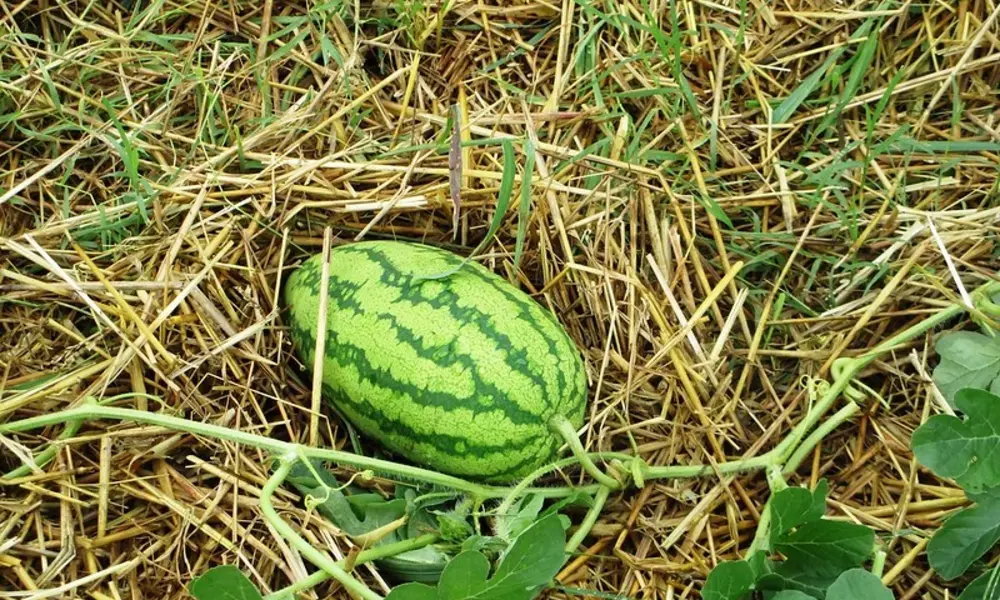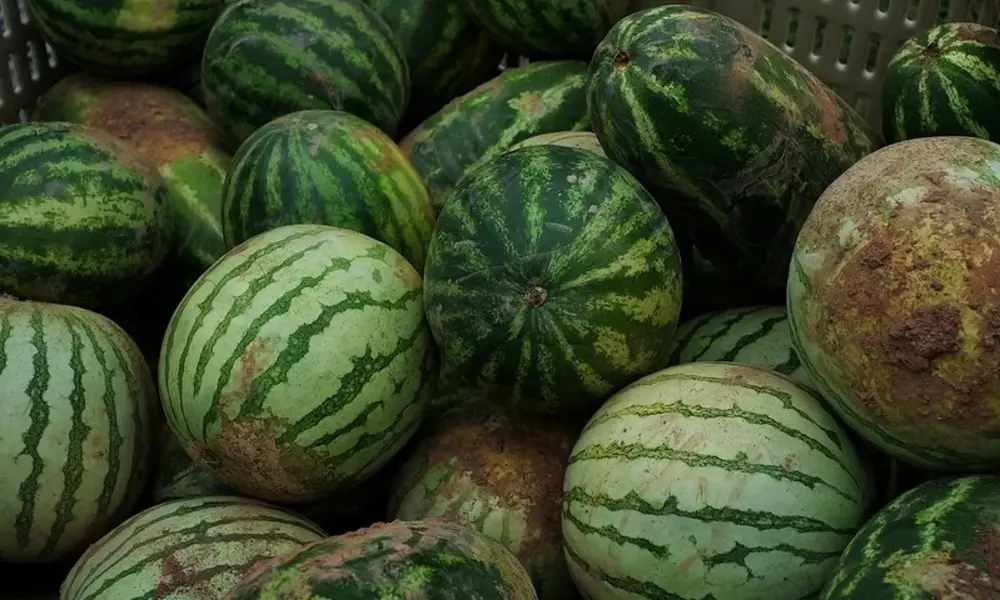Companion planting is a gardening technique that involves planting different crops together to maximize their growth, health, and yield. In this blog post, we’ll explore the world of companion planting specifically for watermelons. We’ll discuss the best companion plants for watermelons, plants to avoid, and the benefits of companion planting. Let’s dig in!
What Is Companion Planting?
Different plants are cultivated together in a horticultural technique known as companion planting to promote their growth and ward against pests.
It is based on the concept that certain plants have beneficial interactions when grown nearby. By carefully selecting companion plants, we can create a harmonious garden ecosystem that promotes the health and productivity of watermelons.
Companion planting offers several advantages, such as natural pest control, improved pollination, enhanced nutrient availability, and weed suppression.
It also helps in maximizing garden space by utilizing intercropping techniques. By understanding companion planting principles, you can create a thriving watermelon garden.
Best Companion Plants for Watermelons
Garlic, Onions, or Chives
These aromatic plants repel pests like aphids and beetles, which are common watermelon pests. Additionally, they enhance the flavor and aroma of watermelons when grown nearby.
Nasturtiums, Marigolds, Lavender, and Other Flowers
Planting flowers like nasturtiums, marigolds, and lavender near watermelons attracts pollinators such as bees and butterflies.
These pollinators increase fruit sets and help in achieving better yields. These flowers also act as natural pest deterrents, keeping harmful insects and nematodes away from watermelons.
Dill, Mint, or Other Herbs
Herbs like dill and mint attract beneficial insects such as wasps and hoverflies, which prey on watermelon pests. These herbs also help mask the scent of watermelons, making it harder for pests to locate them.
Lettuce
Planting lettuce around watermelon plants provides shade to the roots, preventing excessive evaporation and conserving soil moisture. Lettuce also acts as a living mulch, suppressing weeds and maintaining soil temperature.
Radishes
Radishes are excellent companion plants for watermelons. They help break up compacted soil, improving drainage and aeration. Radishes can also act as sacrificial plants, attracting pests away from watermelons and diverting their attention.

Worst Companion Plants for Watermelons
While companion planting offers many benefits, some plants are not compatible with watermelons. These plants may compete for nutrients, and space, or attract similar pests and diseases. Examples of plants to avoid planting near watermelons include cucumbers, squash, and pumpkins.
These plants belong to the same family (Cucurbitaceae) as watermelons and can increase the risk of disease transmission.
Size and Light Considerations
When planning companion planting for watermelons, it’s essential to consider the size and light requirements of companion plants.
Watermelons are large, sprawling vines that require ample space and full sun exposure. Select companion plants that have compatible growth habits and can tolerate the shade created by the watermelon vines. This ensures that all plants receive sufficient light and space to grow.
Best Companion Plants for Deterring Pests
Companion plants can help deter pests naturally, reducing the need for chemical pesticides. Some plants emit strong scents or produce compounds that repel common watermelon pests. Here are a few examples:
Garlic, Onions, or Chives
The pungent aroma of garlic, onions, or chives repels common watermelon pests like aphids and beetles. By interplanting these aromatic plants with watermelons, you can create a barrier that discourages pests from infesting your watermelon plants.
Marigolds
Marigolds are known for their strong scent, which acts as a natural deterrent for pests. They repel nematodes, squash bugs, and cucumber beetles, which are common threats to watermelon plants.
Plant marigolds around the perimeter of your watermelon patch or between rows to provide a protective barrier.
Best Companion Plants for Pollination
Pollination is crucial for watermelon fruit set and development. By attracting pollinators to your garden, you can significantly increase the chances of successful pollination.
Here are some companion plants that can help attract pollinators to your watermelon patch:
Flowers
Nasturtiums, lavender, and other vibrant flowers act as bee magnets. Bees are essential pollinators for watermelons, as they transfer pollen from the male flowers to the female flowers, resulting in fruit formation. Plant these flowers near your watermelon plants to encourage pollinator activity.
Best Companion Plants for Nutrients
Companion plants can play a vital role in improving soil fertility and nutrient availability for watermelons. Some plants can fix nitrogen, while others act as dynamic accumulators, drawing up nutrients from deep within the soil.
Here are a few examples of nutrient-enhancing companion plants:
Legumes
Leguminous plants, such as beans and peas, have nitrogen-fixing bacteria in their root nodules. These bacteria convert atmospheric nitrogen into a usable form that enriches the soil. Interplanting legumes with watermelons can help provide a natural source of nitrogen, promoting healthy growth.
Cover Crops
Sow cover crops like clover or vetch during the off-season or in areas of the garden not currently occupied by watermelons.
These cover crops help prevent soil erosion, improve soil structure, and scavenge nutrients from deeper soil layers. When turned into the soil before planting watermelons, they release the accumulated nutrients, benefiting the subsequent crop.
Compost Crops
Utilize fast-growing crops like comfrey or buckwheat as “green manure” or compost crops. These plants have deep root systems that mine nutrients from the soil and accumulate them in their foliage.
When cut and incorporated into the soil as mulch or compost, they release the stored nutrients, nourishing the watermelon plants.

How to Plant and Grow Watermelons
To ensure successful watermelon cultivation, follow these guidelines:
1. Choose a sunny location: Watermelons thrive in full sunlight, so select a spot that receives at least 6-8 hours of direct sunlight per day.
2. Prepare the soil: Watermelons prefer well-drained, fertile soil. Amend the soil with organic matter, such as compost or well-rotted manure, to improve its nutrient content and drainage.
3. Spacing: Watermelon plants require ample space to spread. Allow a minimum of 3-4 feet between plants and leave 6-8 feet between rows.
4. Watering: Watermelons have high water requirements, especially during fruit development. Provide consistent moisture by watering deeply when the top inch of the soil becomes dry.
5. Support and trellising: While watermelons are typically grown on the ground, trellising can be used to save space and promote better air circulation. Use slings or supports to hold the developing fruits.
6. Pest management: Regularly monitor your watermelon plants for pests and diseases. Remove any affected leaves or fruits promptly and consider using organic pest control methods if necessary.
Bad Neighbors for Watermelons
In companion planting, it’s crucial to avoid planting certain crops near watermelons as they may have negative effects on growth or attract similar pests and diseases.
Here are some plants that are considered bad neighbors for watermelons:
Cucumbers
Cucumbers belong to the same plant family as watermelons (Cucurbitaceae) and are prone to similar pests and diseases. Planting them together increases the risk of cross-contamination and the spread of pathogens.
Squash and Pumpkins
Squash and pumpkins are also part of the Cucurbitaceae family and share common pests and diseases with watermelons.
Planting them near can lead to increased competition for resources and higher susceptibility to infections.
Fennel
Fennel is known to inhibit the growth of nearby plants, including watermelons. Its strong root exudates can hinder the development of neighboring crops, so it’s best to keep fennel away from watermelon plants.
By avoiding the planting of incompatible crops near watermelons, you can reduce the risk of disease transmission, competition for nutrients and space, and overall plant stress.
Benefits of Companion Planting
Companion planting offers numerous benefits for watermelon cultivation:
- Pest control: Companion plants with strong scents or natural repellent properties can help deter pests, reducing the need for chemical insecticides.
- Pollination enhancement: By attracting pollinators with companion flowers, you can increase the chances of a successful fruit set and improve overall yield.
- Nutrient optimization: Selecting companion plants that contribute nitrogen, improve soil structure, or act as nutrient accumulators can enhance the nutrient content and fertility of the soil.
- Weed suppression: Companion plants, particularly those with dense foliage, can help smother weeds, reducing competition for resources and minimizing weed growth.
- Biodiversity and ecological balance: By diversifying plantings and creating a balanced ecosystem, you promote beneficial insects, birds, and other organisms that contribute to the health and sustainability of your garden.
Conclusion
Companion planting for watermelons can greatly enhance the growth, health, and productivity of your garden. By carefully selecting companion plants that repel pests, attract pollinators, and improve soil fertility, you create a thriving ecosystem that supports watermelon growth.
Remember to consider the size and light requirements when planning your companion plantings. Avoid planting incompatible crops and instead focus on those that have mutually beneficial relationships with watermelons. By following proper planting and care techniques, you can enjoy a bountiful watermelon harvest while promoting a sustainable and environmentally friendly garden.
Embrace the concept of companion planting and experiment with different combinations to find what works best for your specific garden conditions. Happy gardening and enjoy the delicious rewards of your watermelon companion plantings!
FAQs
Q1. What should you not plant next to the watermelon?
Here are a few plants you should avoid planting next to watermelons:
- Cucumbers
- Squash and pumpkins
- Fennel
Q2. What plants go well with watermelon?
Here are a few plants that go well with watermelons:
- Garlic, onions, or chives
- Nasturtiums, marigolds, lavender, and other flowers
- Dill, mint, or other herbs
- Lettuce
- Radishes
Q3. Can watermelon and cantaloupe grow together?
Yes, watermelon and cantaloupe can grow together as they belong to the same plant family (Cucurbitaceae) and have similar growing requirements.
Q4. Can you plant cilantro and watermelon together?
Yes, you can plant cilantro and watermelon together as they are compatible companion plants.
